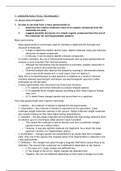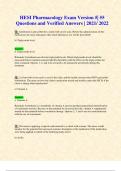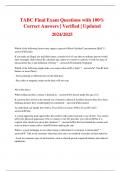Summary
Summary Complete Modern Analytical Techniques I Revision Notes (A Level Edexcel)
- Institution
- PEARSON (PEARSON)
Comprehensive study guide for Chemistry A Level, made by an Oxford Biochemistry student with all 9s at GCSE and 3 A*s at A Level! Information arranged by spec point. Notes written using past papers, textbooks and more.
[Show more]












